Why Were Ba And Ka Powerful Elements Of Soul In Ancient Egyptian Beliefs?
A. Sutherland - AncientPages.com - In Egyptian beliefs, the soul had three parts, the Ka, the Ba, and the Akh. These three spiritual elements found refuge in the body. Therefore, it was vital to keep the body intact after death and to equip it with the necessary items for life.
The Ba was a spiritual aspect of an individual, usually depicted as a bird with a human head, and in this form, the Ba of a deceased person was able to move through the underworld and revisit the earth by day.
 Left: The Ba of Queen Nefertari, representing her unique character, stood before a false door, an architectural feature found on the west walls of tombs and mortuary temples. Food would be placed on an offering table in front of the door, serving as a link between the living and the dead. The ka would leave the burial chamber to partake of the offerings, providing sustenance for the deceased. The ba was expected to unite with the ka in order to transform the deceased into akh. Source; Right: One of many ancient depictions of Queen Nefertari. Credit: Public Domain
Left: The Ba of Queen Nefertari, representing her unique character, stood before a false door, an architectural feature found on the west walls of tombs and mortuary temples. Food would be placed on an offering table in front of the door, serving as a link between the living and the dead. The ka would leave the burial chamber to partake of the offerings, providing sustenance for the deceased. The ba was expected to unite with the ka in order to transform the deceased into akh. Source; Right: One of many ancient depictions of Queen Nefertari. Credit: Public Domain
So, the Ba-bird represented the ancient Egyptian concept of the soul. The Ba was power, and just as the gods had power (which they could multiply at will), the people also had their Ba.
In the beginning – during the Old Kingdom (c. 2613-2181 BC) - the Ba was only attributed to the god-king. It was expressed with the sign of the 'jabiru-bird.' The situation changed during the First Intermediate period (2181-2040 BC) and the Middle Kingdom.
The Ba, which was previously reserved for the king, became a property of ordinary people and was represented by a man-headed hawk, often depicted hovering over the mummies. Therefore, ancient graves frequently had narrow passages built for visitation by the Ba so they could quickly enter and then leave.
The Coffin Texts, a collection of ancient Egyptian funerary spells written on coffins in the First Intermediate Period (ca. 2181–2055 BC), say that Ba is separated from the body upon a person's death.
The Ba "comes out of the discharges of his flesh and the perspiration [probably =foam secreted by the corpse] of his head." Then [the grain god] Nepri is to take it away so that the Ba may see the primeval god Atum and may finally accompany him on his journey in the sun-barque." 1
However, other texts say the deceased received the Ba of the god Horus.
Ka Continued To Exist After Death
Ka survived the body's death and could reside in an image or statue of a person." It was bound to the body and represented its vital (hyper-powerful physical forces). Ka exists forever. So that 'to go to it is synonymous with 'to die' (or 'to be resurrected).
The Egyptians believed that the people were made of clay on the pottery wheel of the god Khnum, the god of fertility, associated with procreation and water, and worshiped from the 1st dynasty (c. 2925–2775)) into the early centuries AD. Another belief was that humanity was created from the tears of God Ra.
They also believed that every living being possessed a Ka, a life-like, individual personality, but a god had many Ka (plural of 'kau'). The exact significance of this aspect is still considered a matter of controversy. Still, the idea of Ka is closely related to the concept of the soul frequently compared to the second image of the person (or the person's double.)
As such, the Ka of the deceased person can continue to be active as long it has access to oils, food, and incense. Written by a hieroglyph of uplifted arms, it seems initially to have symbolized the protecting divine spirit of a person. Later, the role of Ka increased, and it began to personify physical and intellectual qualities.
Akh and the KA and BA were other principal aspects of the soul. The Akh enabled the soul to assume temporarily any form it desired to revisit the earth, but only temporarily. It was usually represented as a bird and could appear to the living as a ghost.
The ancient Egyptians believed that the union in the death of the Ba and the Ka could bring about the Akh, capable of perfectly understanding both the physical and spiritual realms.
The Akh was an undead spirit of a deceased person, and the spirit of Ra brought the concept of Maat. The aspect of Akh encapsulates the idea of light - the transfigured spirit of a person that becomes one with light after death.
Ba-bird hovering over a mummy. (After the Papyrus of Ani from Thebes, ca. 1420 BC). Image credit: British Museum
The Coffin Texts, a collection of ancient Egyptian funerary spells written on coffins in the First Intermediate Period (ca. 2181–2055 BC) say that Ba is separated from the body upon a person's death. The Ba "comes out of the discharges of his flesh and the perspiration [probably =foam secreted by the corpse] of his head.” Then [the grain god] Nepri is to take it away, so that the Ba may see the primeval god Atum and may finally accompany him on his journey in the sun-barque." 1
However, according to some other texts, the deceased received the Ba of the god Horus.
Ka Continued To Exist After Death
Ka survived the death of the body and could reside in an image or statue of a person. It was bound to the body and represented its vital (hyper-powerful physical forces). This Ka, which thus exists forever, so that ‘to go to it’ is synonymous with ‘to die’ (or ‘to be resurrected), is created, like man himself.” 1
The Egyptians believed that the people were made of clay on the pottery wheel of the god Khnum, the god of fertility, associated with procreation and water, and worshiped from the 1st dynasty (c. 2925–2775)) into the early centuries AD. Another belief was that humanity was created from the tears of God Ra.
They also believed that every living being possessed a Ka, a life-like, individual personality, but a god had many Ka (plural of ‘kau’). The exact significance of this aspect is still considered a matter of controversy, but the idea of Ka is considered to be closely related to the concept of soul frequently compared to the second image of the person (or the person’s double.)
As such, the Ka of the deceased person can continue to be active as long it had access to oils, food, and incense. Written by a hieroglyph of uplifted arms, it seems initially to have symbolized the protecting divine spirit of a person. Later, the role of ka increased and it began to personify both physical and intellectual qualities.
Akh – along with the KA and BA – was another principal aspect of the soul. The Akh enabled the soul to assume temporarily any form it desired in order to revisit the earth, but only temporarily. It was usually represented as a bird and could appear to the living as a ghost.
The Akh was an undead spirit of a deceased person, and the spirit of Ra, who brought the concept of Maat. The aspect of Akh encapsulates the concept of light - the transfigured spirit of a person that becomes one with light after death. The ancient Egyptians believed that the union in death of the Ba and the Ka could bring about the Akh, capable to perfectly understand both the physical and spiritual realms.
Written by – A. Sutherland - AncientPages.com Senior Staff Writer
Updated on Feb 2, 2023
Copyright © AncientPages.com All rights reserved. This material may not be published, broadcast, rewritten or redistributed in whole or part without the express written permission of AncientPages.com
Expand for referencesReferences:
- Morenz S. Egyptian Religion
More From Ancient Pages
-
 Magnificent Alsengem Among 30,000 Archaeological Objects Discovered In Kalmar, Sweden
Artifacts | Mar 5, 2024
Magnificent Alsengem Among 30,000 Archaeological Objects Discovered In Kalmar, Sweden
Artifacts | Mar 5, 2024 -
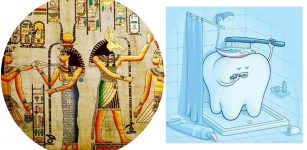 Ancient Egyptians Invented Toothpaste
Ancient Technology | Dec 26, 2015
Ancient Egyptians Invented Toothpaste
Ancient Technology | Dec 26, 2015 -
 Those Who Mysteriously Disappeared To A World Beyond Human Understanding
Featured Stories | Apr 30, 2019
Those Who Mysteriously Disappeared To A World Beyond Human Understanding
Featured Stories | Apr 30, 2019 -
 Major Archaeological Discovery Of A 7,000-Year-Old Settlement In Miami – But Its Future Is In Danger
Archaeology | Feb 10, 2023
Major Archaeological Discovery Of A 7,000-Year-Old Settlement In Miami – But Its Future Is In Danger
Archaeology | Feb 10, 2023 -
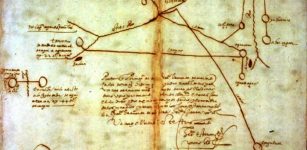 Etzanoa: Long-Lost Native American City Discovered In Kansas After 400 Years
Archaeology | Apr 24, 2017
Etzanoa: Long-Lost Native American City Discovered In Kansas After 400 Years
Archaeology | Apr 24, 2017 -
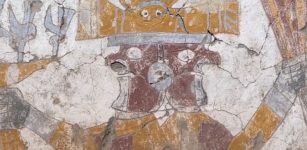 Ancient Murals Of Mysterious Two-Faced Beings And Supernatural Creatures At Pañamarca, Peru
Archaeology | Mar 21, 2023
Ancient Murals Of Mysterious Two-Faced Beings And Supernatural Creatures At Pañamarca, Peru
Archaeology | Mar 21, 2023 -
 Colonnaded Hall Decorated With Captivating Frescoes Unearthed At Pompeii
Archaeology | Dec 30, 2024
Colonnaded Hall Decorated With Captivating Frescoes Unearthed At Pompeii
Archaeology | Dec 30, 2024 -
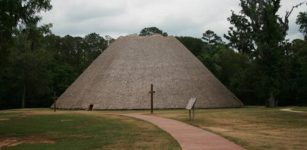 Did Democracy Have A Separate Origin In The Americas?
Archaeology | Jun 15, 2022
Did Democracy Have A Separate Origin In The Americas?
Archaeology | Jun 15, 2022 -
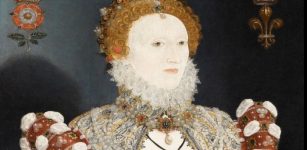 Queen Elizabeth I Was Identified As Author Of Tacitus’s Annales Translation
News | Dec 1, 2019
Queen Elizabeth I Was Identified As Author Of Tacitus’s Annales Translation
News | Dec 1, 2019 -
 Unraveling The Mystery Why Experienced Norse Sailors Feared The Oceans And Seas
Myths & Legends | Oct 8, 2024
Unraveling The Mystery Why Experienced Norse Sailors Feared The Oceans And Seas
Myths & Legends | Oct 8, 2024 -
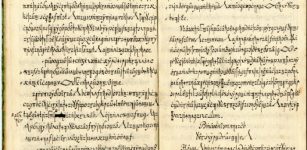 Copiale Cipher – Secrets Of Mysterious Coded Manuscript And The Oculist Order
Artifacts | Feb 4, 2019
Copiale Cipher – Secrets Of Mysterious Coded Manuscript And The Oculist Order
Artifacts | Feb 4, 2019 -
 Charlemagne – Most Famous Emperor Of Education And Enemy Of Pagan Worshippers – What Did He Really Mean For Europe?
Featured Stories | Mar 22, 2023
Charlemagne – Most Famous Emperor Of Education And Enemy Of Pagan Worshippers – What Did He Really Mean For Europe?
Featured Stories | Mar 22, 2023 -
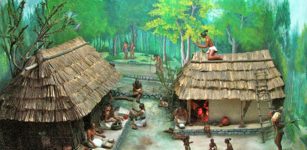 Daily Life Of Ancient Maya
Ancient History Facts | Oct 12, 2020
Daily Life Of Ancient Maya
Ancient History Facts | Oct 12, 2020 -
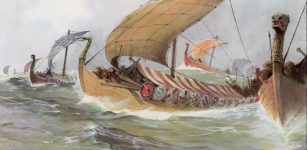 Battle Of Visby – Death Came With King Atterdag’s Ships
Featured Stories | Jul 27, 2022
Battle Of Visby – Death Came With King Atterdag’s Ships
Featured Stories | Jul 27, 2022 -
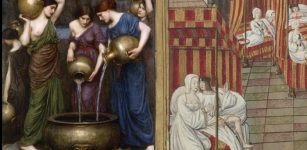 Mythical Danaides: Daughters Of Danaus Condemned In Hades To Eternal Punishment
Featured Stories | Mar 22, 2016
Mythical Danaides: Daughters Of Danaus Condemned In Hades To Eternal Punishment
Featured Stories | Mar 22, 2016 -
 Mama Pacha: Respected And Feared Supreme Goddess Of The Andean People
Featured Stories | Jul 23, 2020
Mama Pacha: Respected And Feared Supreme Goddess Of The Andean People
Featured Stories | Jul 23, 2020 -
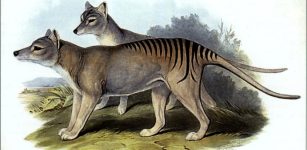 Human-Driven Mass Extinction Is Eliminating Entire Branches Of The Tree Of Life – New Study
Biology | Sep 19, 2023
Human-Driven Mass Extinction Is Eliminating Entire Branches Of The Tree Of Life – New Study
Biology | Sep 19, 2023 -
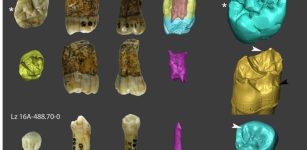 Neanderthals Lived Much Longer In Gipuzkoa Than Previously Thought
Archaeology | Feb 10, 2023
Neanderthals Lived Much Longer In Gipuzkoa Than Previously Thought
Archaeology | Feb 10, 2023 -
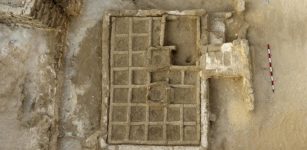 4,000-Year-Old Funerary Garden Found In Luxor, Egypt
Archaeology | May 9, 2017
4,000-Year-Old Funerary Garden Found In Luxor, Egypt
Archaeology | May 9, 2017 -
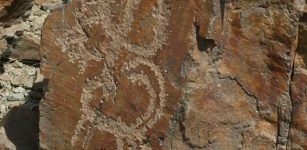 Petroglyphs Hold Secrets To 14,000 Years Of Human Life In Iran
Archaeology | Apr 30, 2020
Petroglyphs Hold Secrets To 14,000 Years Of Human Life In Iran
Archaeology | Apr 30, 2020

